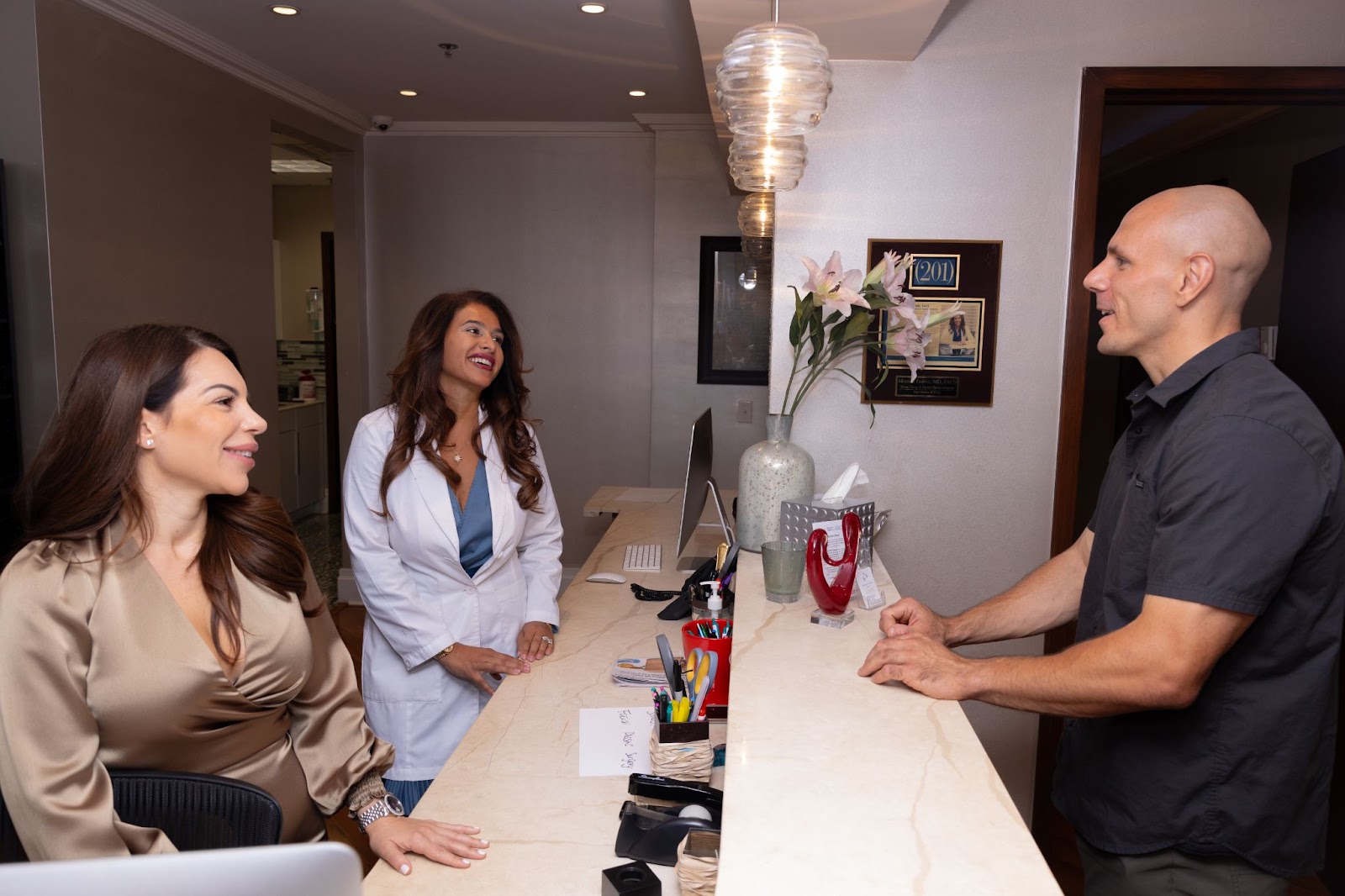As the double board-certified, undisputed leader in deviated septum repair in New Jersey and New York City, Dr. Tadros understands just how uncomfortable having a deviated septum can be. Many people, especially athletes, struggle with the symptoms caused by this condition, but relief is out there. If you’re asking the question, “Can a nose job fix my deviated septum?” we’re here to answer. Keep reading to
What is a deviated septum?
Before jumping into the treatment, it’s important to understand how a deviated septum works and the effect it can have on individuals with the condition. When your nasal septum (the narrow strip of cartilage separating the two nostrils) is slightly offset to one side or the other, you may experience discomfort or difficulty breathing. This condition is known as a deviated septum.
Deviated septums are fairly common. In fact, up to 80% of people have at least a slightly deviated septum, according to the Mayo Clinic. Some patients never realize they have the condition; others experience serious challenges to their quality of life.
Causes & Symptoms
Although they are sometimes congenital, usually, deviated septums form after birth as a result of physical trauma or injury that moves the cartilage out of place. This means that athletes are especially prone to developing a deviated septum due to the nature of many contact sports.
Most patients with a deviated septum notice their condition because they have difficulty breathing through one or both of their nostrils. Alone, this blocked airflow can cause serious issues for patients, but they may also experience other symptoms. Frequent nosebleeds, recurring sinus infections, facial pain, headaches, postnasal drip, and noisy breathing during sleep.
Deviated septums do not heal on their own, so if you’re experiencing any of these symptoms, it’s best to seek professional help at the Center for Sinus, Sleep, & Facial Plastic Surgery.
Can a nose job help?
The answer is complicated: yes and no. When most people think of a nose job, they picture a procedure that restructures the size or shape of the nose. This operation is called a rhinoplasty, but a rhinoplasty alone won’t correct the problem. Instead, Dr. Tadros uses what is called a septoplasty to directly adjust the source of the deviation: the nasal septum.
This procedure is designed to reposition the nasal septum in the center of your nose. A basic septoplasty simply realigns this section of the nose in the anatomic midline and does not change the shape or size of the nose. Sometimes, however, Dr. Tadros recommends patients combine a septoplasty with one of three additional procedures to fully restore the sinus-nasal airway: turbinate reduction, balloon sinuplasty, or endoscopic sinus surgery.
The Procedure
We usually perform the procedure in an outpatient setting, meaning you can go home the same day. It’s typically done under general anesthesia, but in some cases, local anesthesia may do the trick.
During the procedure, Dr. Tadros works through the nostrils, making an incision in the lining of the septum to reach the cartilage targeted in the treatment. The deviated septum may be moved into the right position, or portions of the septum may be removed. After the septum has been straightened, it may then be stabilized temporarily with small plastic tubes, splints, or stitches.
The Recovery
After the surgery, you’ll be monitored in a recovery room for a few hours before you can go home. You’ll need to arrange for a ride home because of the effects of the anesthesia.
You may experience some swelling, nasal stuffiness, and mild nosebleeds in this post-op period. If splints were placed inside the nose during surgery, they would typically be removed after a week. Dr. Tadros will give you specific post-op instructions, which may include:
Avoiding physical activities like running or other exercises that might increase your blood pressure and lead to heavy bleeding.
Keeping your head elevated helps reduce swelling.
Not blowing your nose for at least three days after surgery to allow the tissues to heal properly.
Most people can return to their normal activities within a week following the surgery. However, full recovery might take several weeks, and you may continue to experience some nasal stuffiness for a few months as the swelling inside your nose goes down.
Alternative Treatments
Although surgery provides the most lasting and effective solution for deviated septum symptoms, Dr. Tadros also offers non-surgical treatment options to relieve your discomfort. Usually, this involved nasal steroids, allergy medications, nasal irrigation, or nasal strips. If you’re not ready to commit to a septoplasty, ask Dr. Tadros which alternative treatments may work for you. ‘

Over 20,000 Happy Patients & Counting
Having a deviated septum can decrease your quality of life, but the Center for Sinus, Sleep, & Facial Plastic Surgery can help you breathe easy once again. If you’re ready to take control of your symptoms and find a permanent solution, it’s time to join the ranks of Dr. Tadros’s 20,000 happy patients in New York and New Jersey. Contact our office to schedule your consultation!

